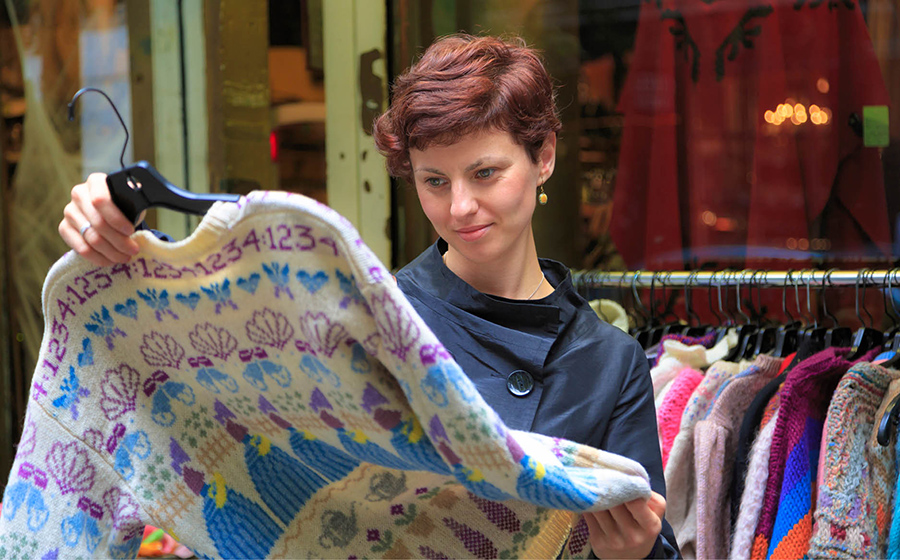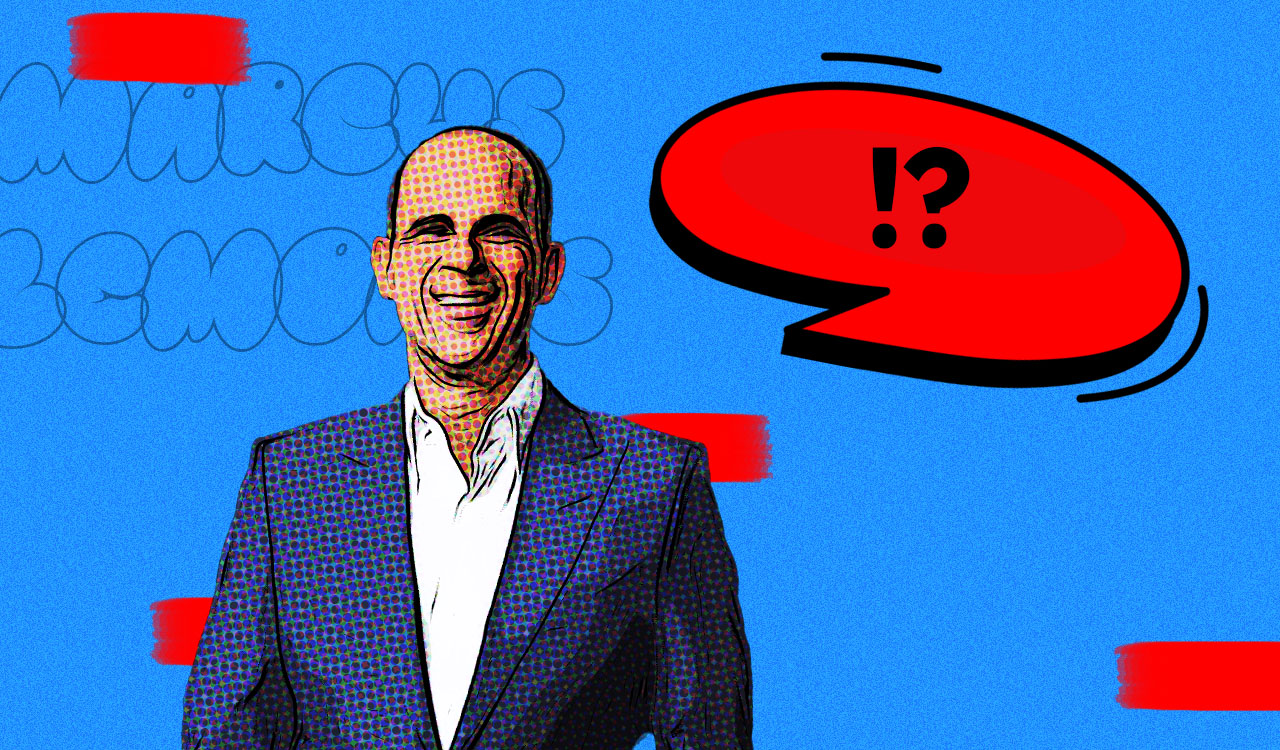Thrifting has taken over. The resale market has grown at 21x the pace of the mainstream apparel market in the last three years, and more retailers are hopping aboard the consignment bandwagon–with a whopping 9 out of 10 retail executives saying they want to get into resale in the next year. Although thrifting is undeniably a trend, it hasn\’t followed the path of a traditional trend cycle. Instead of beginning with the clothing manufacturers, as in the case of traditional fashion trends, the thrifting trend began to catch on in response to consumer demand–being helped along by the internet, sourcing transparency within the fashion industry, and Marie Kondo.
The Building Blocks of a Movement
Consumers became more aware of the environmental and humanitarian impact of fast-fashion apparel production in 2013. After 1,100 people died in the Rana Plaza factory collapse, it became a lot harder for consumers to look the other way when it came to the factory conditions where their apparel was produced. Customers started looking for a globally-conscious alternative that would still give them the thrill of the hunt and convenience of fast-fashion shopping. Thrift stores were this guilt-free alternative.
The digitization of thrift was the final step in making secondhand shopping competitive with fast-fashion. Sites such as ThredUp, Poshmark, the RealReal, and Swap.com suddenly made thrift shopping as convenient as ordering fast-fashion online. Even Goodwill has gone digital and now customers can thrift shop on their phones from anywhere and they have access to a huge pool of inventory. The fashion trend cycle has also become less defined, so there is also less of a need for customers to wear of-the-moment apparel– for example, manufacturers have been trying to eliminate skinny jeans for eons to minimal avail. Fashion has become more about expressing oneself and identifying one\’s tribe than mass conformity, and this shift in consumer sentiment shows no signs of slowing down as individualistic Gen Z comes into buying power.
The Future of Resale
ThredUp predicts that the resale market will reach $51 billion by 2023. A growing number of retailers have employed the old \”if you can\’t beat \’em, join \’em\’ adage by adding thrift or consignment items to their existing assortment. This doesn\’t mean that customers will exclusively purchase thrift store merchandise, but that the resale market will further permeate mainstream markets, including department stores, boutiques (or those that it hasn\’t already), off-price chains, and clothing subscription services. It won\’t be long before even retailers that specialize in luxury apparel and accessories also house barely-worn consignment goods. After all, luxury customers comprise the largest demographic of secondhand shoppers– 26 percent of luxury buyers also shop secondhand.
The ownership model for apparel is changing as a result of the growth of secondhand and subscription models, with more customers buying clothing with the intent to donate or resell it in the future. Purchasing off-brand fast-fashion merchandise is beginning to look a lot less economical, as low-quality merchandise can\’t be resold or, in some cases, even donated for a tax write-off. Thanks to Kondomania, the resale market is saturated with clothing and some thrift stores are raising the standards what merchandise they are willing to accept. Conscious consumers will return to full-price shopping with the awareness that each piece of apparel will have a longer lifecycle and the story of each item will become as important to customers as the piece of apparel itself.
Tomorrow\’s Brand Names
Thrifting has led to resurrection in shoppers seeking quality brand name merchandise. Consignment stores selling pre-owned luxury brands are making quality merchandise accessible to customers with a wide range of income levels, getting certain customers hooked on (full quality) luxury or high-ticket merchandise that they may not have had access to in the past. This is the opposite of the impact of the rise of diffusion lines and the Myth of the Maxxinista phenomenon, where respected brand names lost their audience by releasing low-quality versions of their clothing under the same label to be sold at off-price stores–see Coach, Michael Kors, Tommy Hilfiger, Adidas, etc. trickle down to secondhand.
Thrifting won\’t go away because environmental stressors are making conscious consumerism more of a necessity for future generations. However, perhaps thrifting will be more like athleisure in terms of trend followers, where the trend will stay strong among certain demographics-such as millennials and Gen Z-while others move on to more exciting merchandise. Yet the word \”exciting\” still doesn\’t refer to fast-fashion. Instead, think upcycled, clothing that\’s still made with high-quality material to be in it for the long haul–think Levi\’s Redone, Patagonia Re///collection, ASOS Reclaimed, and Urban Renewal by Urban Outfitters. Recycled materials also have a big future, such as Adidas\’ shoes made out of ocean plastic. We will see less manufacturing with raw materials and, speaking of the ocean, to the retailer that uses the least water go the spoils.
A New Ownership
So, how will customers make clothes feel like their own in a world where they\’re wearing everyone else\’s old merchandise? Customization will create ownership in a resale market and personalizing touches such as embroidery, patches, and paint will help consumers differentiate themselves. The customization trend is perfectly in line with the fact that more retailers are adding service-oriented features to their existing stores or opening inventory-less stores-such as Nordstrom Local-that are only meant to be used for personal shopping and tailoring purposes. While RetailDive listed service-based concepts as one of the \”10 Retail Trends to Watch\” in 2019, I\’d venture to say that this is more than a fleeting trend–it only makes sense that service-based retail concepts will continue to grow in proportion to the growth of the luxury consignment market.
Resale is on-track to make up 1/3 of customers\’ closets by 2033, but make no mistake, it isn\’t just customers buying resale that will be influenced by the growth of the secondhand apparel market. The thrift market represents a shift in the way customers think about consumerism, ownership, and how they achieve bragging rights. Pretty soon, consumers will see fast-fashion purchases something to be ashamed of and, similar to how everyone wants to give you the sordid backstory of their rescue dog nowadays and few will buy from a breeder, customers will be eager to share the story of the positive environmental impact of each piece of clothing they buy.
To Summarize
The thrifting trend will lead to stronger brand names made with high-quality materials and a rise in repurposed apparel. Retailers would be wise to shift their focus from off-price to upcycled and to get comfortable having a dialogue about the environmental impact of their sourcing process… because conscious consumerism isn\’t going anywhere and fast fashion\’s days are numbered.




